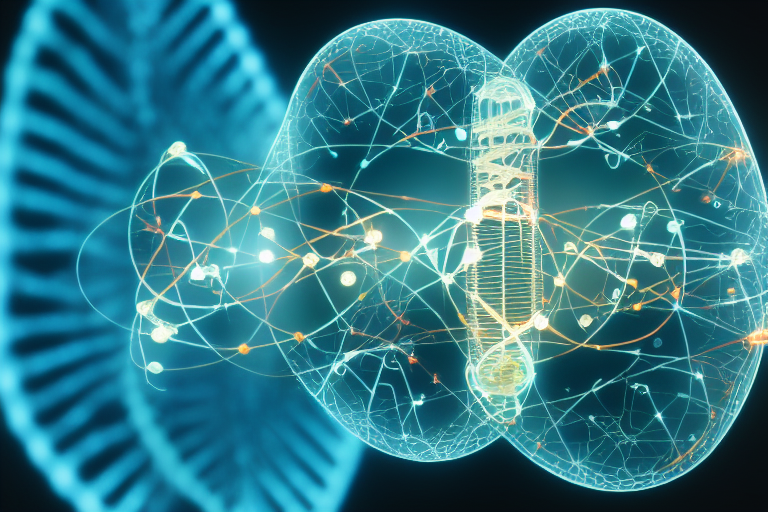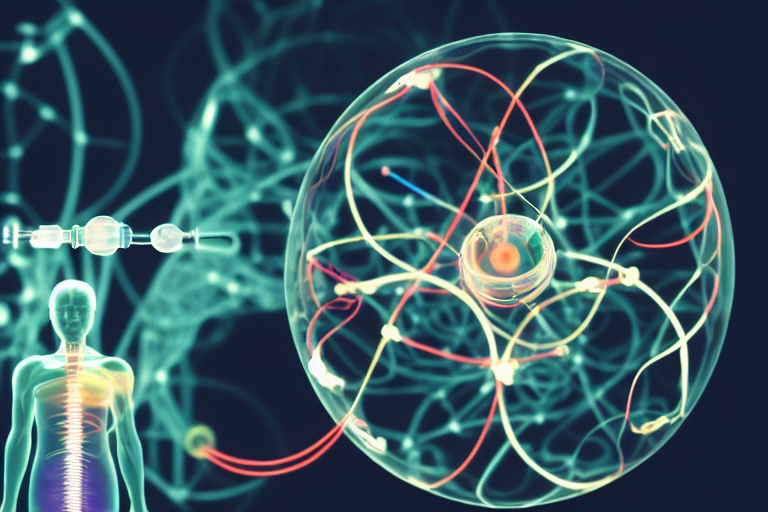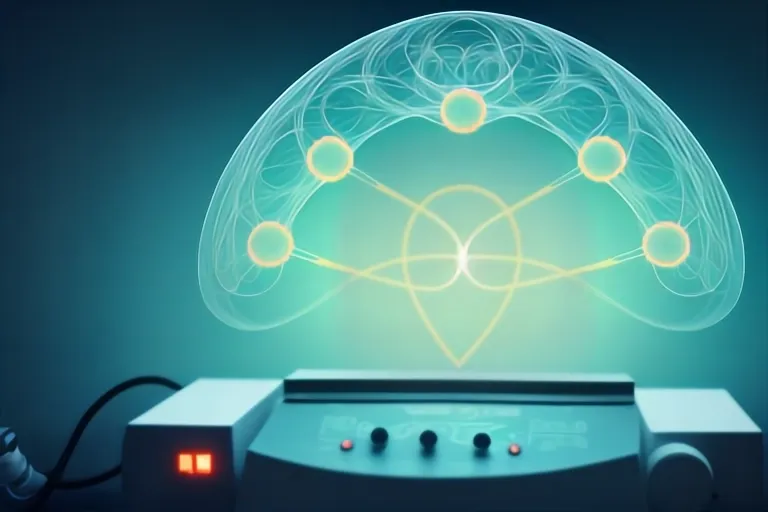What is bio resonance good for?

Bioresonance therapy, a groundbreaking technique that doesn’t always necessitate the involvement of a therapist or other health specialist, is transforming how we approach health and wellness. One of its most crucial advantages is its ability to detect deficiencies early, allowing preventive action to mitigate potential problems. This leads us to the question: what is bioresonance good for ?
This cutting-edge technology relies on bio-resonance devices capable of identifying subtle imbalances and anomalies within the body. Unlike traditional pharmaceuticals, bio-resonance offers a significant advantage by avoiding introducing toxic substances and heavy metals into the body, as it emits no harmful radiation.
One of the most remarkable aspects of bioresonance is its personalized approach to patient care. By diagnosing and treating based on specific electromagnetic waves, bio-resonance therapy provides targeted solutions for mental, emotional, and physical health concerns tailored to each individual’s unique needs.
As a holistic approach to medicine, bio resonance considers the entirety of an individual, addressing not only their physical condition but also their mental and emotional well-being. This holistic perspective represents a revolutionary shift in healthcare, broadening the spectrum of intervention and care options available.”
Also read >>> healy device
What exactly is bioresonance?

Bioresonance is a holistic approach to medicine and well-being based on the principle that, like all organisms, we emit frequencies, specific electromagnetic waves – in other words, signals – that can be measured and interpreted for therapeutic purposes.
In other words, cells emit waves, each with its own frequency. Together, the body’s cells, each with its own signature, create what is known as a vibratory field, which can be measured by electromagnetic, magnetic or quantum devices.
Also Read>>> Healy Frequency Device Review
The aim is to record changes in the body’s frequencies (waves) in order to assess the patient’s general condition and, more specifically, his or her mental, emotional and physical state. Once imbalances have been identified, these devices are able to carry out the necessary rebalancing.
Bioresonance is therefore a therapy that uses a device to detect dysfunctions in the body, and to rebalance and harmonize the electromagnetic field of the person being treated, so that they regain their energy and mental, emotional and physical balance.
How does bioresonance work?
The human body and its healthy organs emit a specific vibratory level of electromagnetic waves. These signals have been measured and modeled. So, when we detect altered vibrations in a person, compared to a panel of standards and reference measurements, we deduce that his or her body is in poor health.
This comparative measurement is carried out using sensors, electrodes or antennas placed in contact with the body or close to the patient. In concrete terms, they will detect the patient’s vibratory level and that of his or her organs, and compare it with modeled references in order to measure any anomalies. This is what bioresonance enables.
Once the diagnosis has been established, and provided the device is equipped with integrated software to do this (depending on the technical nature of the tool), it will generate specific resonance frequencies to correct the imbalances detected and rebalance the signals. This is how bioresonance is a therapy.
What makes bioresonance revolutionary?
Bioresonance therapy, a groundbreaking technique that doesn’t always necessitate the involvement of a therapist or other health specialist, is transforming how we approach health and wellness. One of its most crucial advantages is its ability to detect deficiencies early, allowing preventive action to mitigate potential problems. This leads us to the question: what is bioresonance good for?
This cutting-edge technology relies on bio-resonance devices capable of identifying subtle imbalances and anomalies within the body. Unlike traditional pharmaceuticals, bio-resonance offers a significant advantage by avoiding introducing toxic substances and heavy metals into the body, as it emits no harmful radiation.
One of the most remarkable aspects of bioresonance is its personalized approach to patient care. By diagnosing and treating based on specific electromagnetic waves, bio-resonance therapy provides targeted solutions for mental, emotional, and physical health concerns tailored to each individual’s unique needs.
As a holistic approach to medicine, bio resonance considers the entirety of an individual, addressing not only their physical condition but also their mental and emotional well-being. This holistic perspective represents a revolutionary shift in healthcare, broadening the spectrum of intervention and care options available.”
Also Read >>> quantum physics
Sience and conventional medicine vs. quantum physics and bioresonance.

Conventional medicine and bioresonance have two very different approaches to the diagnosis and treatment of medical problems.
Conventional medicine and its treatments are based on scientific evidence, clinical studies and protocols widely accepted by the medical community.
Bio-resonance is not widely recognized by the medical community, which generally regards it as a pseudoscientific, alternative or complementary approach to conventional medicine. It is therefore not regulated in the same way in all countries.
What does bioresonance treat?
Bioresonance acts on the imbalances in the body that reveal a number of diseases, specific pathologies and fragilities. In this way, it treats not only their symptoms, but also their causes. Here’s how bioresonance works.
- Respiratory, digestive and skin allergies (hay fever, dust mite allergies, asthma, gluten and oilseed allergies, etc.).
- Female hormonal disorders (menstruation, menopause, etc.).
- Skin problems (eczema, psoriasis, etc.).
- Bronchial and sinus diseases (chronic bronchitis, pollinosis, etc.).
- Autoimmune diseases (celiac gastritis, multiple sclerosis, etc.).
- Digestive disorders (irritable bowel, etc.)
- Migraines, vertigo, neuralgia, tinnitus.
- Back pain and joint inflammation.
- Detoxification of heavy metals.
- Nervous system disorders (lyme disease, mood disorders, etc.).
- Sleep disorders and insomnia.
- Addictions (smoking, overweight, etc.).
When and how to use bioresonance?
Bioresonance as a preventive, complementary or curative treatment?
Bioresonance should be approached in the same way as acupuncture, i.e. as a fundamental medicine. Unlike many pharmacological treatments in conventional medicine, whose effects on symptoms are often immediate, bioresonance acts on imbalances and illnesses over time, but in depth. This does not rule out positive results from the very first session.
It can also be used to complement certain allopathic treatments, to increase their efficacy, reduce their toxicity and limit their side-effects.
As mentioned above, bioresonance is used not only to treat the body’s imbalances, but also to prevent them. This is a major and innovative asset in the field of medicine.
Preparing for a bioresonance session.
As with conventional medical treatment, we recommend avoiding alcohol and other stimulants, and drinking plenty of water before and during the treatment. It is also advisable not to use a cell phone during the treatment, and not to exercise or eat a heavy meal before the consultation.
Whether at home (a bio-resonance device can be purchased) or during a consultation with a practitioner, the session begins with a series of questions about the person’s medical and family history, lifestyle and environment. The bioresonance device then collects all this information and processes it.
Then, using sensors attached to the body, electromagnetic waves are measured to diagnose and treat the patient.
Bioresonance: testimonials and feedback.
Many testimonials can be found in the literature on the subject. From what we’ve read here and there or gathered from those around us, as well as from our own experience, bioresonance, when used, wins many favorable opinions, despite an often skeptical approach at first.
Many people have finally succeeded in giving up smoking. Allergies and certain types of pain are treated favorably. Fragile emotional states, sleep disorders and anxiety are also treated. The accuracy of the diagnosis is surprising.
But to find out more and form your own opinion, we recommend you experience it for yourself.
How much do I pay for a session?
The prices we’ve given are only indicative, as they vary from therapist to therapist.
You should expect to pay between 70 and 80 US$ for sessions lasting around an hour and a half, and up to 100 US$ for more in-depth sessions (around two hours). For control and preventive follow-up, between 60 and 80 US$.
It is possible to purchase a portable quantum device, which can be used without the intervention of a specialist and is easy to transport. Brand names are beginning to appear on the market.
Conclusion: Bioresonance, a promising alternative.
One of the questions often asked by people hesitating to resort to this medical practice is the impact of waves on the body. Wouldn’t magnetic resonance be dangerous for the body, which is already heavily stimulated by an environment laden with waves and other harmful energy sources?
With the exception of a few detractors, the answer seems to be a resounding “no” This therapeutic technique, its results, the solutions it brings to certain ailments and medical problems, the pain it relieves, the quality of life it improves thanks to innovative technology, is harmless to the body.
What we must be wary of, however, is becoming so enthusiastic and satisfied with the analysis and results of this therapeutic method that we decide to see only through it.
Bioresonance is no substitute for a medical analysis, a consultation with a doctor and the use of appropriate treatment and medication. Because bioresonance has its limitations, and cannot yet detect all illnesses and diseases. We must remain aware of this.
But whatever the case, bioresonance remains an effective therapy and a preventive method par excellence!
*Disclaimer:
This article is intended for informational purposes only and does not substitute for professional medical advice, diagnosis, or treatment. The content provided discusses Bioresonance therapy, a method not universally recognized or proven as effective by the broader medical community, and it should be understood as a complementary or alternative approach.
The information contained herein is not meant to replace a qualified healthcare professional’s advice or judgment. Readers are strongly advised to consult with their healthcare provider for any questions or concerns about their health, especially before trying new therapies, treatments, or making any changes to their health or wellness routines.




